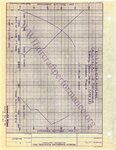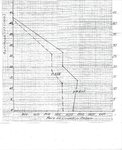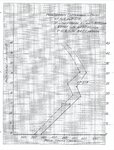Classic art nouveau decoration, in the style of Matisse I believe.Is that a cooling fan Gemhorse?
View attachment 595232
Navigation
Install the app
How to install the app on iOS
Follow along with the video below to see how to install our site as a web app on your home screen.
Note: This feature may not be available in some browsers.
More options
You are using an out of date browser. It may not display this or other websites correctly.
You should upgrade or use an alternative browser.
You should upgrade or use an alternative browser.
P-51D vs. Spitfire IX
- Thread starter NevadaK
- Start date
Ad: This forum contains affiliate links to products on Amazon and eBay. More information in Terms and rules
More options
Who Replied?SaparotRob
Unter Gemeine Geschwader Murmeltier XIII
One learns so much here.Classic art nouveau decoration, in the style of Matisse I believe.
If people believe front line combat planes in WW2 didn't have superchargers they can also believe they were given artistic decoration, the French used Lalique glass on theirs.One learns so much here.
SaparotRob
Unter Gemeine Geschwader Murmeltier XIII
Could license built Tiffany engine components have been used?
GrauGeist
Generalfeldmarschall zur Luftschiff Abteilung
And here I thought that was a grill from a Buick...Classic art nouveau decoration, in the style of Matisse I believe.
wuzak
Captain
I don't know WHAT a Spitfire XIV has to do with this thread - GrauGeist's pic appears to be a captured PRXI, only maybe possibly could be caught by Me 163's or 262's, or exceptional flak.
I didn't post the thread but it is a discussion forum and since they both had nominally the same engine it is a fair discussion of airframe performance. However the mistake in the OP is to think that because they had the same engines they were contemporary aircraft. The Spitfire Mk IX and the Mustang Mk I made their operational debut in numbers at Dieppe, the Mk IX escorting US bombers and the Mustang as a fighter / armed recon. That was Aug 1942 when the Mk IX was the RAFs best front line fighter. Griffon engine Spitfires were contemporary with the P-51B the first with single stage engines in squadron service in Dec 1943 and the two stage in mid 1944, before the P-51D appeared in UK. Though it does take time to ship from USA that is the truth of it. By 1944 the UK was starting to ship Mk IX to Russia on lend lease, it wasn't the RAFs top fighter anymore.
The Mk XIV was entering service in December 1943, about the same time as the P-51B.
Mk XII production began in October 1942, began equipping squadrons in February 1943 and had their first combat in April 1943.
wuzak
Captain
So why disrupt the production lines to produce more Mk XIV's when the Mk IX is easily good enough?
That statement could almost define the Spitfire's entire combat career. It seems like almost every major operational Mark was an interim of some sort. The Mk.III wasn't developed, so we got inferior Mk.V's and Hurricane Mk.II's instead.
Followed by the Mk.IX, which was a hasty interim for the Superior Mk.VIII.
Followed again by the Mk.XIV, which was (correct me if I am wrong) an interim model for the Superior Mk.XVIII (More fuel anyway).
Wartime realities obviously dictated the aforementioned actions, but It is a shame none the less. The P-51 had the good fortune of being developed in the US, where the manufacturers had the space and resources available to finish and refine the product before throwing it into combat.
I believe the Mk XIV was an interim for the Spitfire 21, with its new wing. The XVIII was a development of the XIV.
Why they continued to produce IXs and XVIs instead of XIVs is most likely because of the state of production of the engines - two stage Merlins were being churned out by the thousands, two stage Griffons, not so much.
The XIV was the VIII frame with the Griffon engine, essentially.
wuzak
Captain
The Spitfire XVI was of course a new-built Mk. IX (instead of from a Mk.VC airframe) with a Packard-built Merlin 66 known as the '266',with a few other changes and weighed in at 7900lb's to the Mk. IX's 7500lb's
The XVI was almost identical to the IX, sharing the airframe - including the non-retractable tail wheel.
Apart from a few early production versions, I'm sure that the Mk IXs were new built and intended as IXs from the start. Some of the early IXs may have started being built as Vs, but completed as IXs. Not sure that any were converted from existing airframes, apart from prototypes.
Are you saying that the Allison engine in P-39 P-40 and Mustang MkI had no supercharger? There were still two squadrons on Mk Is in service at the end of the war and the RAF would have taken more, at what they did they were very good.
Yup, a total of 16 RAF squadrons operated the Allison engined Mustang in the tac recon role. The majority of those pretty post bombing raid recon images, as well as those really clear low altitude images of the Normandy invasion beaches that you see were taken by RAF Mustang Is and IIs.
So why disrupt the production lines to produce more Mk XIV's when the Mk IX is easily good enough?
You don't need to. Based on the Mk.VIII, the XIV was built on different production lines. Both types were built simultaneously.
despite the fact that Bf 109Fs accounted for a greater number of Fighter Command aircraft in combat between mid 1941 and mid 1942.
Hardly surprising, II/Jg26 was the only gruppe that flew Fw 190's in combat in the autumn of '41. I & III/Jg26 converted to Fw 190's during the winter, where there was not a lot of action going on until Feb 12,iirc. Jg2 converted to Fw 190's during the spring of '42.
Edit:
I misremembered, III/Jg26 began conversion late September, but it was apparently a lengthy, gradual process and they flew 109's in combat while doing it. They flew some missions in Antons late in the year. Otoh, I./Jg26, had not fully converted at the time of the Channel Dash, and flew 109's on that operation.
Last edited:
MiTasol
Captain
The XVI was almost identical to the IX, sharing the airframe - including the non-retractable tail wheel.
Apart from a few early production versions, I'm sure that the Mk IXs were new built and intended as IXs from the start. Some of the early IXs may have started being built as Vs, but completed as IXs. Not sure that any were converted from existing airframes, apart from prototypes.
From memory the reason the exact number of new built Spitfires is unknown is because many damaged airframes were converted to later marks during repair and thus given a new serial.
Modern research may have thrown more light on the subject - it is not an aircraft that I have kept up with in the last 30 years
drgondog
Major
BIll, I know I've asked this before but remember, closed head injuries.
I know you gave numbers for the XP-51F/G but can't remember and well, frankly can't find the thread either. Nothing specific, just off the top of your head will do. The G is the interesting one if I'm not mistaken.
Here is one such presentation. The XP-51F vs P-51B plots are my work sheets for the book after 'normalizing' to Fighter weight for apple to apple comparisons.
Attachments
Peter Gunn
Master Sergeant
Many thanks Bill, I D/L'd those so I won't be asking that dumb question again.Here is one such presentation. The XP-51F vs P-51B plots are my work sheets for the book after 'normalizing' to Fighter weight for apple to apple comparisons.
Also... Jumpin' Jehosephat but the G was fast, yowza.
Twas John Gillespie Magee who nailed it John Gillespie Magee Jr. - WikipediaNailed It!
Glider
Major
True but if you wanted to switch all the production to XIV there would have been an interuptionYou don't need to. Based on the Mk.VIII, the XIV was built on different production lines. Both types were built simultaneously.
The Mk XIV was entering service in December 1943, about the same time as the P-51B.
Mk XII production began in October 1942, began equipping squadrons in February 1943 and had their first combat in April 1943.
There is no MkXIV airframe assigned to any squadron in Dec43.
There are 7 airframes assigned to SQ610 recorded on the 10Jan44.
The biggest number of assigned MkXIV airframes to operationnal squadrons at the same moment was 148. (*)
Compared to the numbers of operational MkIX's or the Mustang's, the number of operational MkXIV's is anecdotal.
Production numbers are one thing, operational numbers are better suited to see the importance of each model.
KR
(*) Statistics based on the list from the link provided by Milosh.
PS: No spit could ever roll with the 190, the stang was actually better in the roll at high speed than the 190.
As a spit pilot i would never go into a rolling scissor fight with a Wurger (with a good pilot in the cockpit , not a 19years old with 8hours of flight time) whatever the speed, but as a 190 pilot i would never go into a rolling high speed fight with a Poney, i would do everything to break his speed to keep the advantage of my flight enveloppe.
I don't get someone could say the spit was more maneverable than the poney, at low speed and in the turn yes, but that's all.
In this case you may consider the Meteor that had an even better turn rate than the spit, but it needed 4seconds to bank to initiate the turn (like 15°/sec, maybe exagerating , slightly...) so was the meteor more maneuverable than the Poney in a real combat situation?
Drgndog wrote his father story a long time ago (tried to find it but couldn't) explaining the mock combat between a captured D9 flown by a german pilot and a P51D flown by his father, from memory, there was a lot in good info about manevrability in this story. If someone could link it...thanks.
CORSNING
Tech Sergeant
Clayton Magnet
Staff Sergeant
- 912
- Feb 16, 2013
Its still a contemporary of the P-51B, the total numbers are somewhat irrelevantCompared to the numbers of operational MkIX's or the Mustang's, the number of operational MkXIV's is anecdotal.
See the roll chart provided by Corsning abovePS: No spit could ever roll with the 190, the stang was actually better in the roll at high speed than the 190.
So, the Spitfire was more maneuverable than the P-51 in every measurable way, including roll, up to about 260mph (350mph for clipped wing). But you don't get how someone could say that it was more maneuverable? okI don't get someone could say the spit was more maneverable than the poney, at low speed and in the turn yes, but that's all.
You have a source for this?In this case you may consider the Meteor that had an even better turn rate than the spit
Its still a contemporary of the P-51B, the total numbers are somewhat irrelevant
the P51B was operational in 43, the mk-xiv Not
Ther were between 12 and 15 times more MK-Ix operational at the same time as at the peak of flying mk-xiv .
So, yes, production numbers are irrelevant but operational numbers aren't.
See the roll chart provided by Corsning above
If i remember the story behind this chart correctly, this chart is the result of calculated roll rate and not the result of tests (especially as the wurger was more 180/185°sec at the peak than 160...)
So, the Spitfire was more maneuverable than the P-51 in every measurable way, including roll, up to about 260mph (350mph for clipped wing). But you don't get how someone could say that it was more maneuverable? ok
To move the ailerons in the poney and the wurger you needed one hand whatever the speed. in the spit, from 130mph, you needed 2hands..and the elbows on the cockpit's sides.
So yes, therotically, on paper and on the Naca tabels maybe the spitty was more maneuvrable than the Stang, but in reality with muscular pilot's resistance accounted, the Poney was above the spitty as the plane do not fly itself, having always a crazy guy holding the stick , pushing the buttons and moving the levers that got tired if he has to do more workout in the cockpit than the guy he's flying against...Mustang was almost a hotas plane, the wurger was a hotas plane, the spitty was like a flying gym, with the heavy machinery inside the cockpit for the body building
You have a source for this?
It's called sarcasm, totally exagerating one caracteristic to make your point
Users who are viewing this thread
Total: 1 (members: 0, guests: 1)
Similar threads
- Replies
- 48
- Views
- 10K



